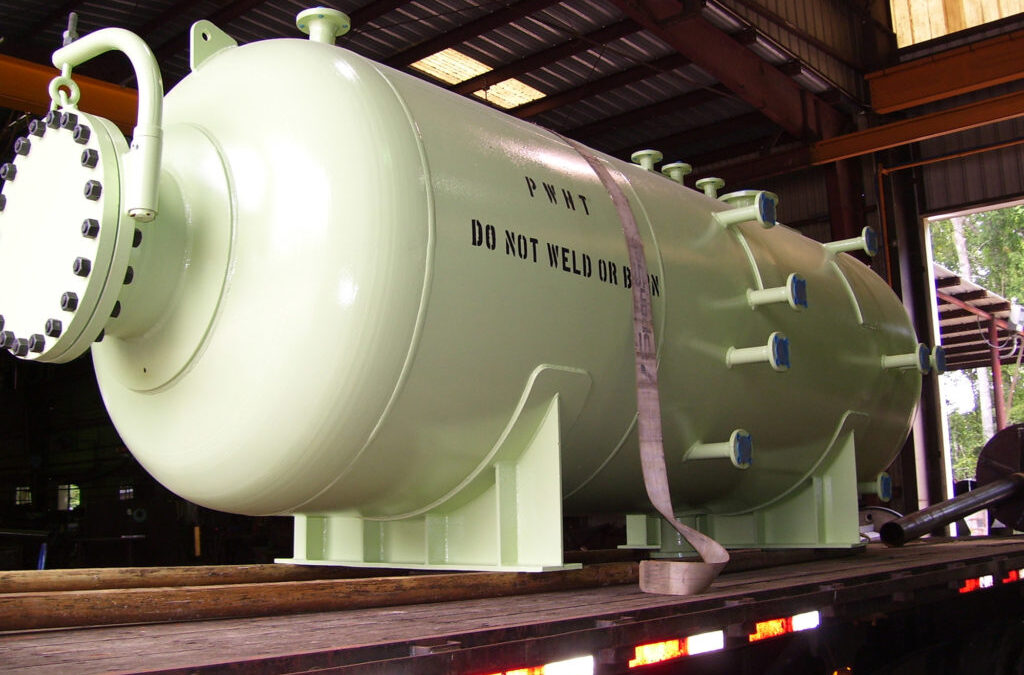A pressure vessel is an extremely important piece of equipment that enables the proper function of a variety of machines in countless industries, including food, chemical, petrochemical, pharmaceutical, oil and gas, and many more. Designed as a storage tank that holds gasses or liquids at a much higher or lower pressure than the surrounding environment, a pressure vessel provides a safe place to contain substances that are crucial to the manufacture of various products.
Importantly, not all pressure vessels are designed the same way. Many different types exist based on their function and the substances they will contain. And because a leaking pressure vessel poses a serious threat to its surrounding environment, experts take great care in the design, construction, and testing of a pressure vessel before it’s put to use.
Working with a trained expert who has a keen understanding of the different types of pressure vessels as well as the corresponding inspection codes will help ensure proper function and safety. It’s also helpful to familiarize yourself with the basic types of pressure vessels, how they are categorized, and how they are used.
Types of Pressure Vessels by Shape
Pressure vessels are often categorized according to their shape, which helps determine how they are made and what they are for.
Cylindrical Pressure Vessels
As the name suggests, a cylindrical pressure vessel has a cylinder-shaped shell with an enclosure on each end. These are the most common pressure vessels because they are easy to produce, inexpensive, and versatile. Though they have weak spots on each end where the head connects to the shell, this weakness can be mitigated by using a thicker material and more rounded end enclosures.
Spherical Pressure Vessels
In contrast to the cylinder, the spherical pressure vessel doesn’t have the same weak spots since the internal and external pressure is evenly dispersed across the entire surface. On the other hand, the spherical design is much more difficult and expensive to produce.
Types of Pressure Vessels by Function
Another helpful way to distinguish the most common types of pressure vessels is according to their primary function.
Storage Vessels
A storage vessel is a holding container for liquids and gasses typically used for industrial purposes. These substances might include natural gas, liquid nitrogen, petroleum products, or even air or water at high or low pressures. It may hold substances until they are needed in the production process, or it may hold the finished product prior to packaging and distribution. These storage vessels provide a protective barrier for both the product itself and the outside environment.
Heat Exchangers
Heat exchangers shift heat from one liquid to another and therefore experience pressure due to the temperature differences. In some instances, it’s necessary to remove the heat because it is a detriment to the production process. At other times, a heat exchanger is used to add heat to a chemical process. These are used in nearly every type of industry, including food, energy, bioprocessing, manufacturing, and pharmaceutical.
Process Vessels
Process vessels hold liquid and gas substances during important parts of the production process. The substances within are combined in some way to create a new product, and this reaction can create significant internal pressure changes. Process vessels vary in design depending on the process they are being used for, which may include mixing and agitation, decantation, distillation, and chemical reaction.
Whatever the situation may be, it’s crucial to have the right type of pressure vessel constructed by trained experts with a keen understanding of industry regulations and safety standards. From storage vessels to process vessels, we are your industrial construction and fabrication experts. With fabrication shops in Hammond and Baton Rouge, Louisiana, we are equipped to design, fabricate, and repair pressure vessels for your application. Contact the PALA team today to get started!

